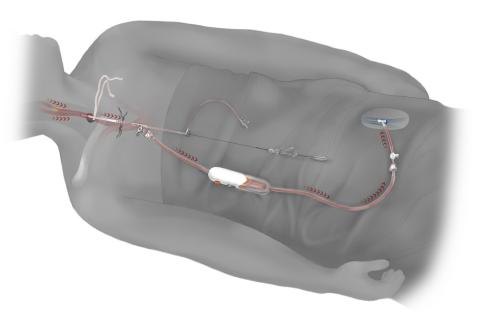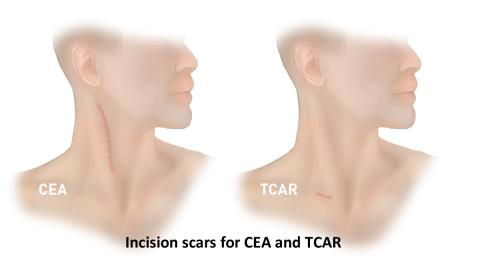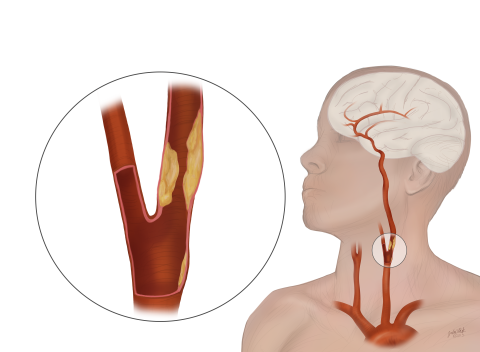Transcarotid Artery Revascularization (TCAR) is a clinically proven, minimally invasive procedure to treat carotid artery disease and help prevent future strokes. TCAR is unique in that blood flow is temporarily reversed during the procedure so that any bits of plaque that may break off are diverted away from the brain.

The TCAR procedure takes place in an operating room. Local or general anesthesia may be used – your surgeon will determine what is best for you.
- The procedure is performed through a small incision at your neckline just above your clavicle.
- Your surgeon will place a tube directly into your carotid artery and connect it to a system that will direct blood flow away from your brain, to prevent any loose plaque from reaching your brain.
- Your blood will flow through the system and any material will be captured in a filter outside the body.
- Your filtered blood will then be returned through a second tube in your upper leg.
- A carotid stent is then placed to stabilize the plaque in your carotid arteries. After successful placement, flow reversal is turned off and blood flow resumes in its normal direction.

While any intervention of the carotid artery carries some risk of causing a stroke because of the procedure itself, TCAR was designed to help minimize that risk. Potential risks of TCAR include:
- Stroke, heart attack or death
- Damage to your carotid artery or cranial nerve
- Bleeding, bruising or swelling at the access site in your neck
- Prior to the procedure, your doctor will order certain tests, such as carotid artery ultrasound, angiography and routine blood work. Be sure to tell your doctor what medications you are currently taking and any allergies you might have.
- You will be asked to take aspirin, an anti-platelet like Plavix, and statins before the procedure, and your doctor may ask you to change other medications.
- You will probably be asked not to eat or drink anything after midnight on the night before your procedure.
Patients who undergo the TCAR procedure recover quickly, typically spending just one night in the hospital. Before you leave the hospital, your doctor will give you advice for activity, diet and medications.
- You will be asked to avoid hard activities like lifting for at least a week. You will be told when you can resume normal activity and return to work.
- Your doctor will prescribe medications for you to take to prevent blood clots from forming in your newly opened artery.
- After stent placement, you will be followed closely to monitor your recovery. An ultrasound will be performed at a later date to determine if any narrowing has occurred in the treated artery.
- To reduce the risk of restenosis (re-occurring blockage) in the area of your stent, you are encouraged to make important diet, exercise, and lifestyle changes. Some patients may need few modifications while others may need to make many changes. It is extremely important to avoid smoking.

